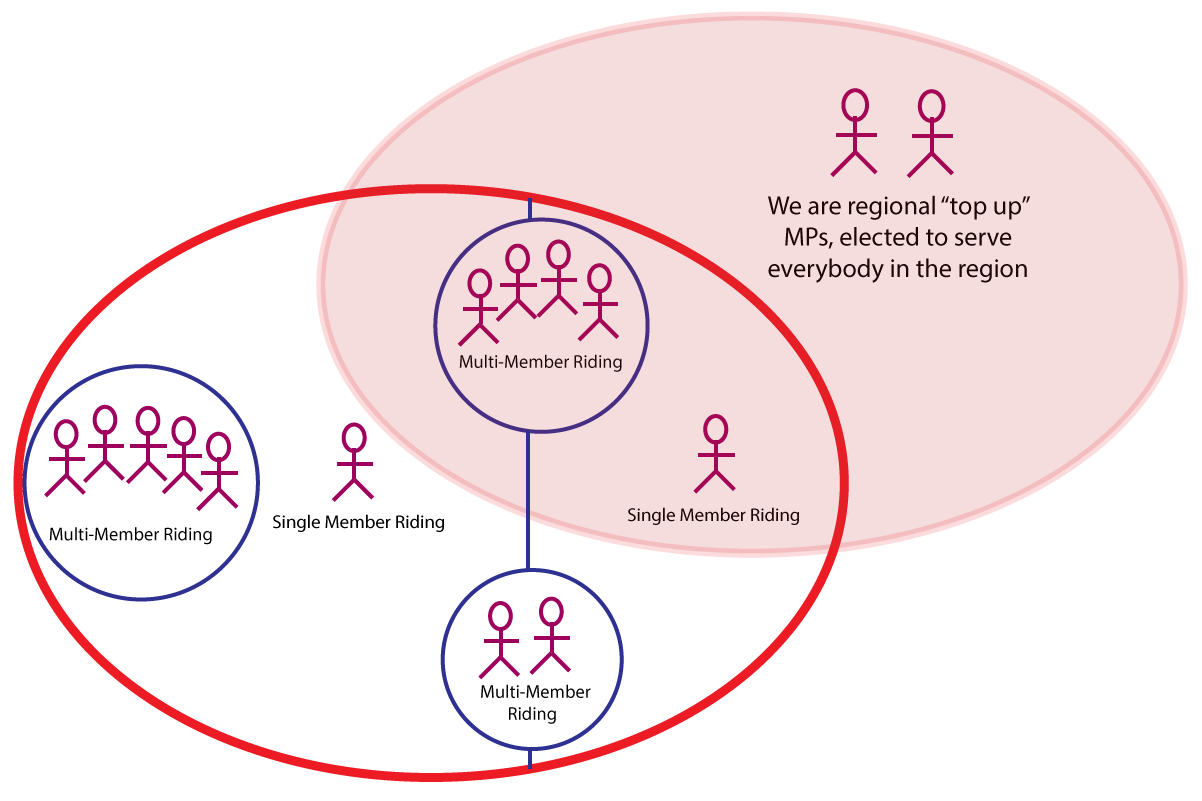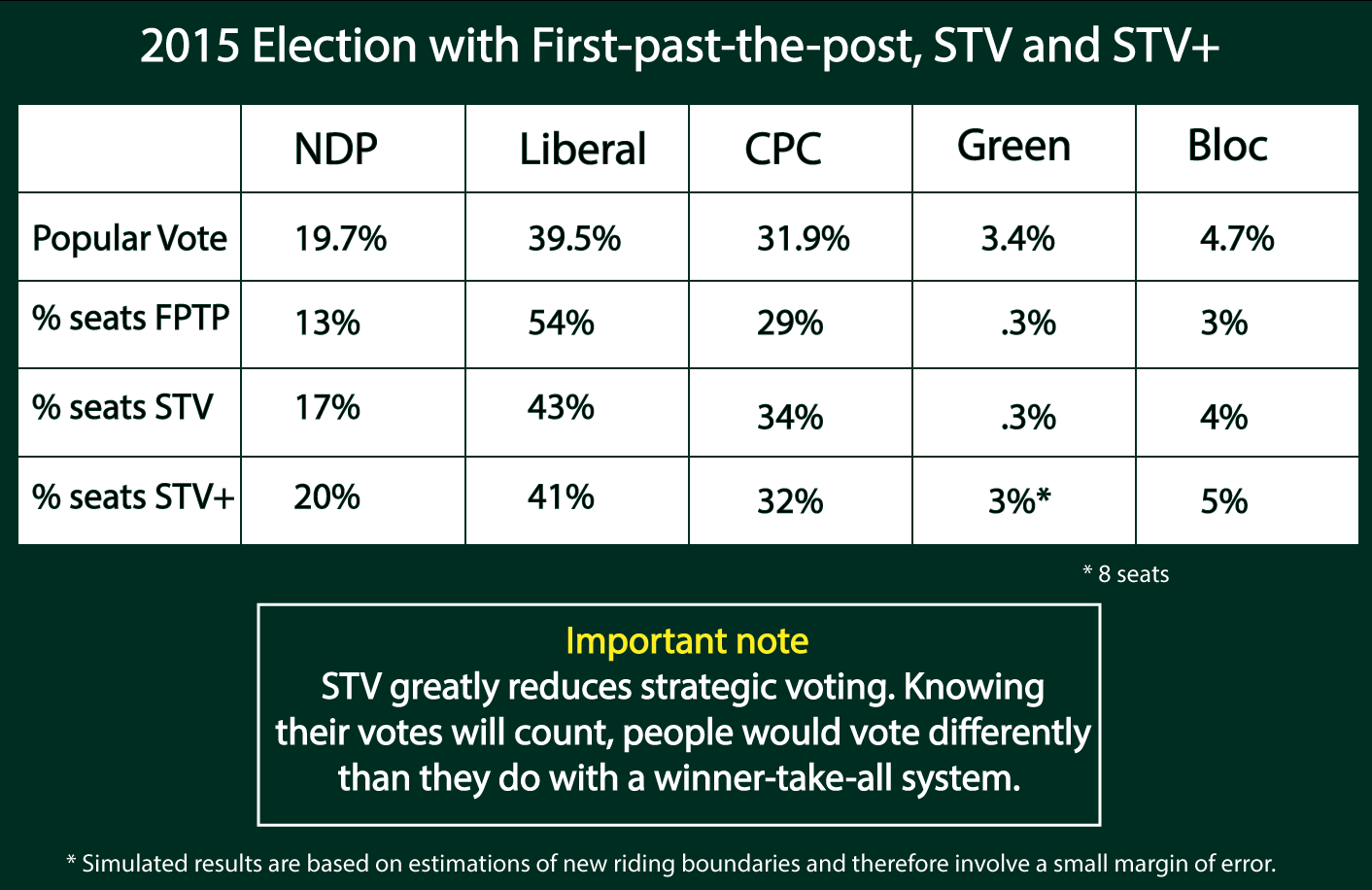
STV+ - An STV Model Tailored for Rural and Urban Canada
Read how it works or watch the video here:
Why STV+?
With STV, multi-member ridings vary in terms of the number of MPs elected in each, with more MPs elected per riding in the urban areas and fewer in the rural areas. This means voters for smaller parties like the Greens and even some larger parties whose support is lower in certain regions may have difficulty winning seats in rural areas where the threshold is higher.
STV+ takes the basic STV model and borrows an idea from Sweden - a small layer of regional top up seats - to make STV even more proportional.
How does STV+ work?
Like Mixed Member Proportional, we would divide Canada into regions. The size of the regions would vary by province and area within each province, but for this example, a 15 member region could be a standard size.
As with a regular STV model, within each region there would be multi-member ridings of various sizes.
With STV+, a flexible number of single member ridings could be retained in our most sparsely populated rural and small urban areas - anywhere from a handful of single member ridings in Canada to up to 25% of all ridings remaining single member.
To make the results in each region proportional, and make sure that every voter has a choice of MPs representing him/her, two regional top-up MPs would also be elected in each region.
Because STV is already a proportional model, only a small layer of top up seats are needed - about 15%, or two top up MPs for each 15 member region.
The advantage of STV+ is that the rural ridings in Canada which remained single member would only need to increase in size by about 15% to accomodate the regional top up MPs (compared to 60% bigger with MMP or combining ridngs with regular STV). This has appeal to some representatives and voters in rural areas.
A second option to accomodate the regional top up MPs is to add just 15% new MPs to the House, which would mean that each rural riding could keep its existing boundaries, the urban ridings would be grouped together using current boundaries, and no redistribution would be required.
Options for electing the top up MPs
The regional top up MPs could be elected by either an open regional list (like MMP) or they could be the candidates who were the best runners up from the local ridings for parties (and their voters) who deserved those regional seats.
Results:
STV+ is a strongly proportional model tailored for our geography. It provides better representation for voters of all parties in rural areas than regular STV, and at least as much proportionality on a regional and national basis as the strongest MMP models for Canada.

